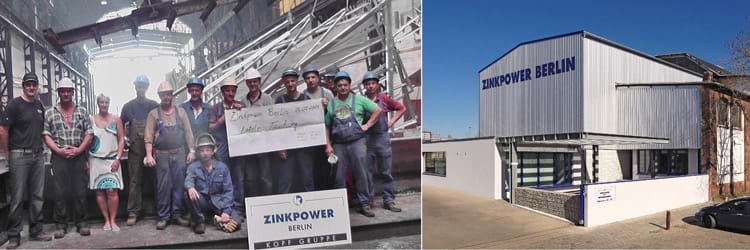Measurements have shown that hot-dip galvanizing delivers on its promises
Wherever you go in Germany's capital city, you'll find building and modernisation work going on. Hot-dip galvanized steel is often the material of choice, characterised by its great resistance to corrosion and resulting long service life.
Recent investigations on the Hiroshimasteg Bridge in Berlin, conducted by the Institut Feuerverzinken (Hot-Dip Galvanizing Institute), delivered the evidence to prove this. The bridge across the Landwehr Canal was built in 1987 and ZINKPOWER Berlin had the responsibility for applying the anti-corrosion coatings to the steel components. Today, 27 years on, the Duplex system is still in very good condition. The layers of zinc were measured and found to be between 190 and 230 µm thick. The entire system, i.e. zinc and base and top coats, was found to be between 360 and 385 µm thick. The experts at the Institut Feuerverzinken say that it will not be necessary to carry out any maintenance work over the medium to long-term.
“From bolts to steel girders – and in colour” could be the Berlin factory's motto. Different types of fencing, gates, balconies, conservatories and staircases, sometimes having to meet exacting artistic demands, are hot-dip galvanized at the ZINKPOWER factory in Berlin-Tempelhof and thus made ready for their future use. Powder coating and colour coating round off the range of anti-corrosion measures the company provides. The site has also been awarded approval for galvanizing reinforced concrete and also offers services for galvanizing small parts.
After almost 50 years, it was time to modernise the plant in 2013. The old hot-dip galvanizing shop was gradually replaced with a new building that meets the highest standards – in terms of hot-dip galvanizing and environmental protection.


